From 'being able to go on-chain' to 'being usable', becoming 'living assets that can be traded' to release the liquidity of tokenized US stocks.
Written by: Web3 Farmer Frank
Since the end of June, the crypto industry has sparked a 'US stock on-chain' craze, with Robinhood, Kraken, and others launching tokenized versions of US stock and ETF trading services, even introducing high-leverage contract products for these tokens.
From MyStonks, Backed Finance (xStocks) to Robinhood Europe, they all allow users to trade US stock assets on-chain through the way of 'real stock custody + token mapping'—theoretically, users only need a crypto wallet to trade Tesla and Apple stocks at 3 AM without needing to open an account through a broker or meeting capital thresholds.
However, with the rollout of related products, news about pinning, premiums, and decoupling has also frequently appeared, and the underlying liquidity problems have quickly surfaced: although users can buy these tokens, they can hardly efficiently short, hedge risks, let alone construct complex trading strategies.
Tokenization of US stocks essentially remains in the initial stage of 'only being able to bet on price increases'.
1. The liquidity dilemma of 'US stocks ≠ trading assets'
To understand the liquidity dilemma of this wave of 'tokenization of US stocks', it is first necessary to penetrate the underlying design logic of the current 'real stock custody + mapping issuance' model.
This model currently mainly divides into two paths, with the core difference being whether or not to have compliance qualifications for issuance:
One type is represented by Backed Finance (xStocks) and MyStonks, featuring a model of 'third-party compliant issuance + multi-platform access', where MyStonks partners with Fidelity to achieve a 1:1 peg to real stocks, and xStocks purchases and holds stocks through Alpaca Securities LLC, etc.;
Another type is the Robinhood-style licensed broker self-operated loop, completing the entire process from stock purchase to on-chain token issuance relying on its own brokerage license;
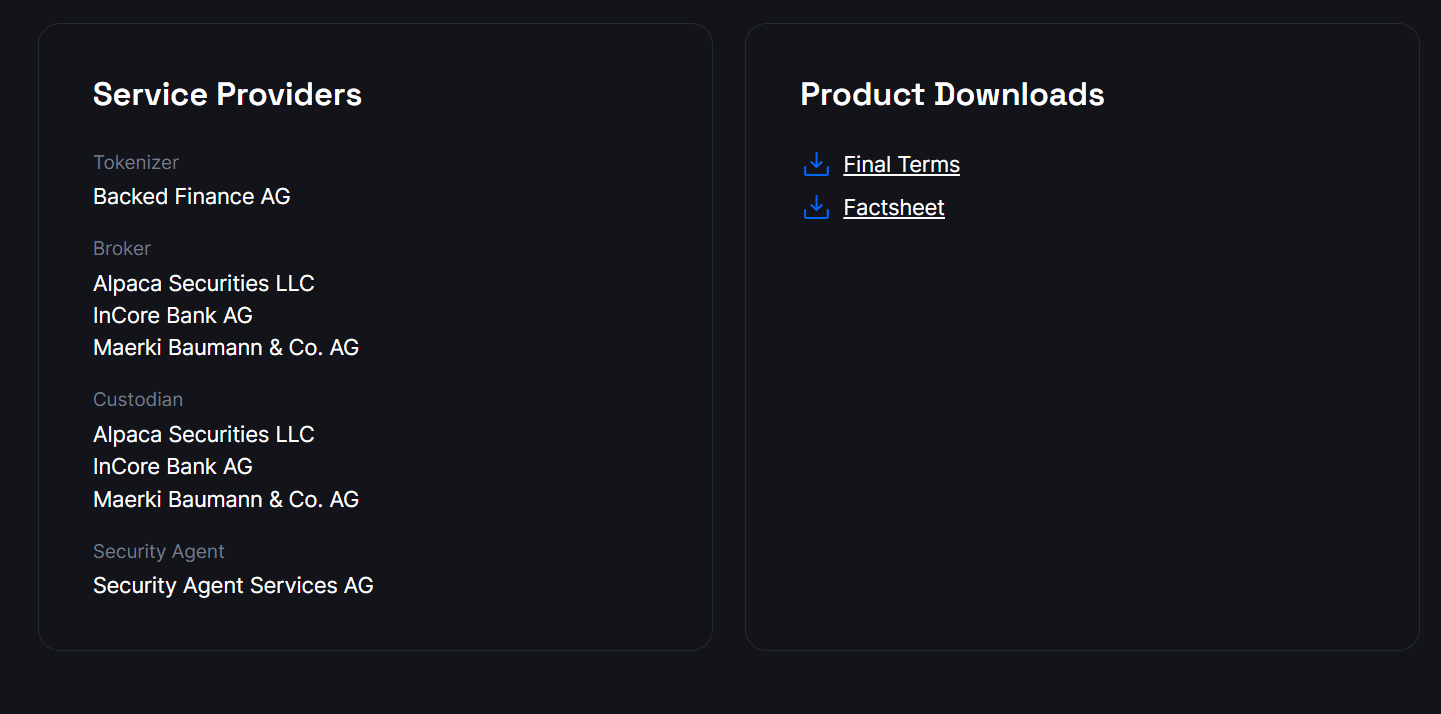
The commonality of the two paths is that they both view tokenized US stocks as purely spot holding assets, where users can only buy and hold for appreciation, turning them into 'sleeping assets', lacking an expandable financial functionality layer, making it difficult to support an active on-chain trading ecosystem.
Moreover, since each token must be backed by an actual stock, on-chain trading is merely a transfer of token ownership, unable to affect the spot price of US stocks, inherently leading to the 'two skins' problem between on-chain and off-chain, where small-scale buying and selling can trigger severe price deviations on-chain.
For example, on July 3, the on-chain AMZNX (Amazon stock token) was pushed up to $23,781 by a single $500 buy order, showing a premium of over 100 times the actual stock price. In non-extreme scenarios, many tokens (like AAPLX) also frequently experience price discrepancies, leading to pinning phenomena that create ideal scenarios for arbitrageurs and liquidity market-making teams.
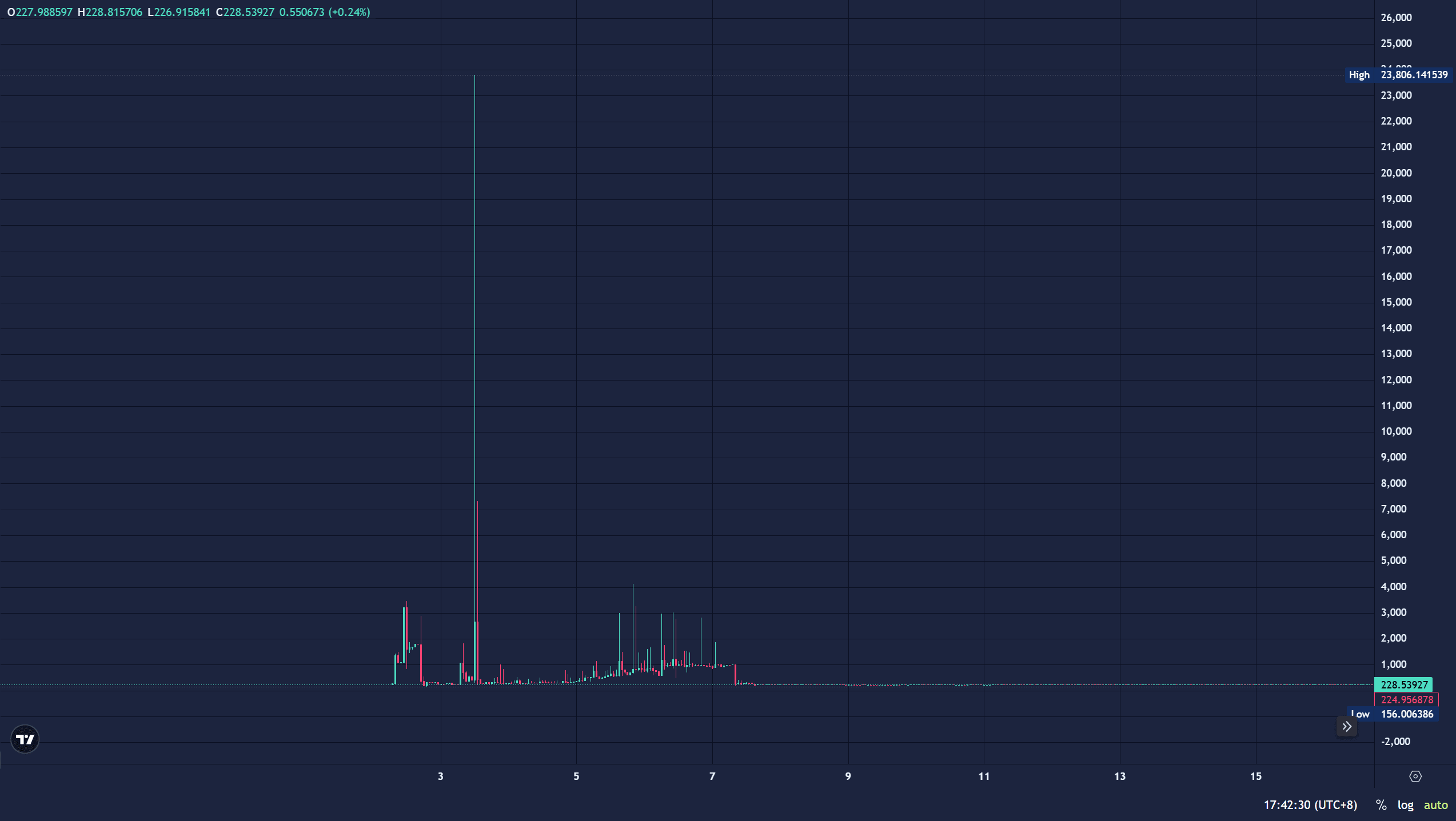
Secondly, the asset function of current US stocks has been severely curtailed. Even though some platforms (like MyStonks) attempt to distribute dividends in the form of airdrops, most platforms do not open voting rights and re-staking channels, essentially just acting as 'on-chain holding certificates' rather than true trading assets, lacking 'collateral attributes'.
For instance, after buying AAPLX, AMZNX, TSLA.M, and CRCL.M, users cannot use them for collateralized lending or as margin for trading other assets, making it even more challenging to access other DeFi protocols (such as using tokenized US stocks for collateralized lending), resulting in an asset utilization rate close to zero.
Objectively speaking, the failures of projects like Mirror and Synthetix in the last cycle have proven that merely having price mapping is far from sufficient. When tokenized US stocks cannot activate liquidity scenarios as collateral and cannot integrate into the trading network of the crypto ecosystem, regardless of how compliant the issuance is or how perfect the custody is, they only provide a token shell, with extremely limited practical value in the context of liquidity scarcity.
From this perspective, the current 'tokenization of US stocks' has only achieved putting prices on-chain, remaining in the initial stage of digital certificates, and has not yet become a true 'tradable financial asset' to release liquidity. Therefore, it is difficult to attract a broader range of professional traders and high-frequency funds.
2. Subsidies and incentives, or 'patching the arbitrage channel'
Therefore, for tokenized US stocks, it is urgent to deepen their on-chain liquidity, provide more practical application scenarios and holding value for holders, and attract more professional funds to enter the market.
Currently, the various mainstream solutions being discussed in the market, aside from the common Web3 model of 'incentivizing liquidity', are attempting to connect 'on-chain - off-chain' arbitrage channels to enhance liquidity depth by optimizing arbitrage path efficiency.
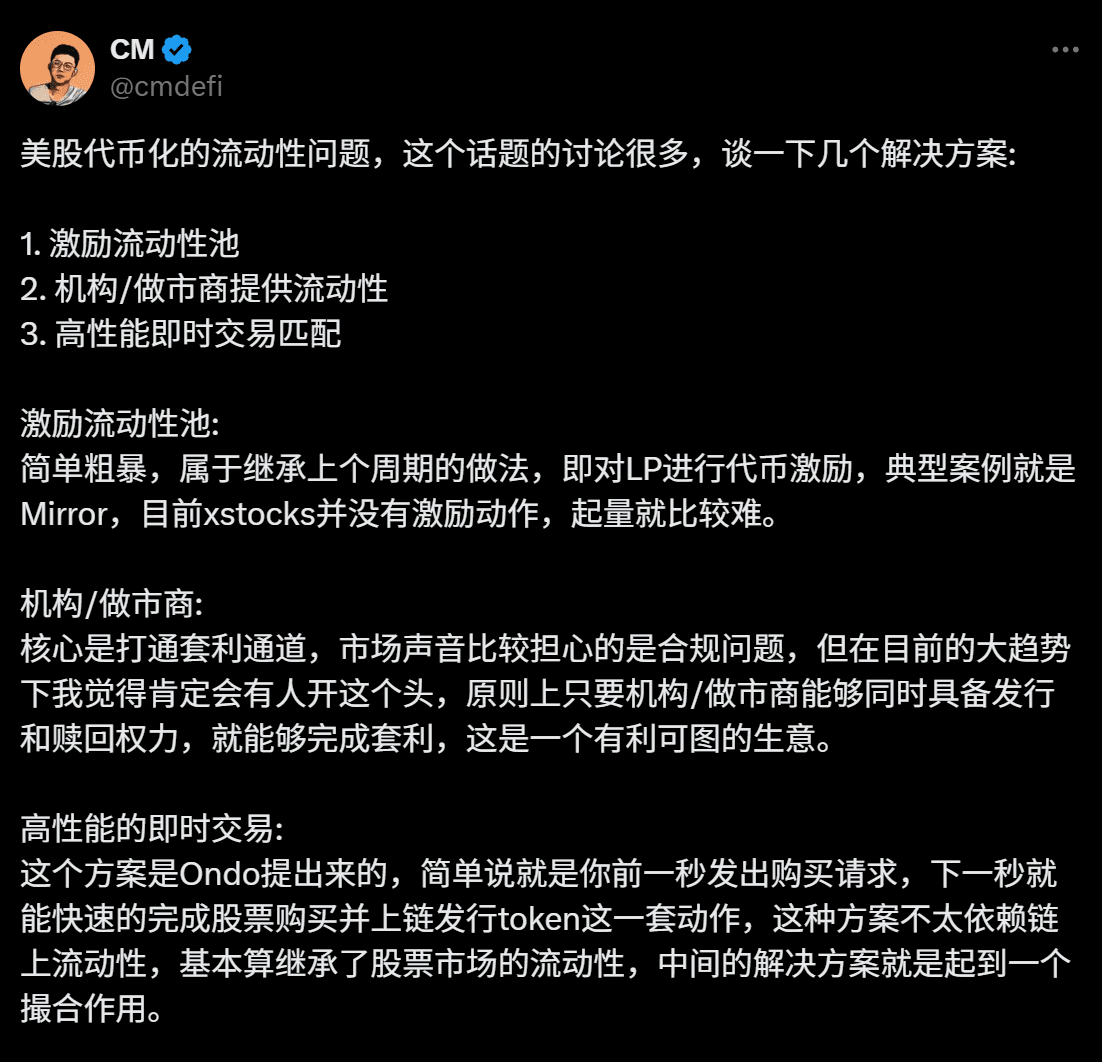
1. Incentivize liquidity pools (like Mirror)
The 'incentive pool model' represented by the Mirror Protocol was once the mainstream attempt at tokenization of US stocks in the last cycle, where the logic was to issue platform tokens (such as MIR) to reward users who provide liquidity for trading pairs, attempting to attract funds into the market with subsidies.
More critically, this model has never considered 'letting tokenized US stocks generate liquidity themselves'—the US stocks tokens deposited by users are only part of the trading pairs, unable to be used in other scenarios, and the assets remain dormant.
2. Market maker-led liquidity (like Backed / xStocks)
The 'market-maker-led model' adopted by Backed Finance (xStocks) and MyStonks attempts to connect on-chain - off-chain arbitrage through compliant channels. For example, xStocks buys corresponding stocks through Interactive Brokers, and market makers can smooth out price discrepancies when the on-chain token price deviates from the spot price by 'redeeming tokens → selling stocks' or 'buying stocks → minting tokens'.
However, the implementation cost of this logic is extremely high. The complexity of compliance processes, cross-market settlement, and asset custody often leads to arbitrage windows being consumed by time costs. For example, the redemption process of Interactive Brokers requires T+N settlement, and asset transfers by custodians often experience delays. When on-chain prices show a premium, market makers often abandon participation because they cannot hedge in time.
Under this model, tokenized US stocks always remain 'targets of arbitrage' rather than assets that can actively participate in trading, resulting in the average daily trading volume of most trading pairs at xStocks being low, and price decoupling becoming the norm.
This is also the core reason why AMZNX could see a 100-fold premium in July without anyone arbitraging it.
3. High-speed off-chain matching + on-chain mapping
The 'off-chain matching + on-chain mapping' model explored by Ondo Finance is actually similar to the PFOF (Payment for Order Flow) model adopted by Mystonks, where the core trading processes are completed in a centralized engine, only the results are recorded on-chain, theoretically connecting to the depth of US stock spot trading.
However, this model has high technical and procedural thresholds, and the trading hours of traditional US stocks need to align with the 24/7 trading nature of on-chain assets.
These three liquidity solution ideas each have their strengths. However, whether it is incentive pools, market makers, or off-chain matching, they all implicitly assume injecting liquidity with external forces rather than letting tokenized US stocks generate liquidity themselves. To be honest, it is difficult to fill the continuously growing liquidity gap solely through on-chain - off-chain arbitrage or incentive subsidies.
Is it possible to jump out of the traditional arbitrage framework of 'on-chain - off-chain' and directly construct a trading loop in the native on-chain environment?
3. Making tokenized US stocks 'living assets'
In the traditional US stock market, the reason for abundant liquidity lies not in the spot itself, but in the depth of trading constructed by a derivatives system of options, futures, etc.—these tools support the three core mechanisms of price discovery, risk management, and capital leverage.
They not only improved capital efficiency but also created long-short games, nonlinear pricing, and diversified strategies, attracting market makers, high-frequency funds, and institutions to continuously enter the market, ultimately forming a positive cycle of 'active trading → deeper markets → more users'.
Currently, the market for tokenized US stocks is precisely missing this structural layer. After all, tokens like TSLA.M and AMZNX can be held but cannot be 'used', as they cannot be used for collateralized lending or as margin for trading other assets, let alone constructing cross-market strategies.
This is reminiscent of ETH before the DeFi Summer, when it could not be lent, used as collateral, or participated in DeFi until protocols like Aave gave it functionalities such as "collateralized lending," releasing hundreds of billions of liquidity. To break through the dilemma, tokenized US stocks must replicate this logic, allowing dormant tokens to become "collateralizable, tradable, and combinable living assets."
If users can short BTC using TSLA.M and bet on ETH trends using AMZNX, then these dormant assets would no longer just be 'token shells', but rather usable collateralized assets, and liquidity would naturally grow from these real trading demands.
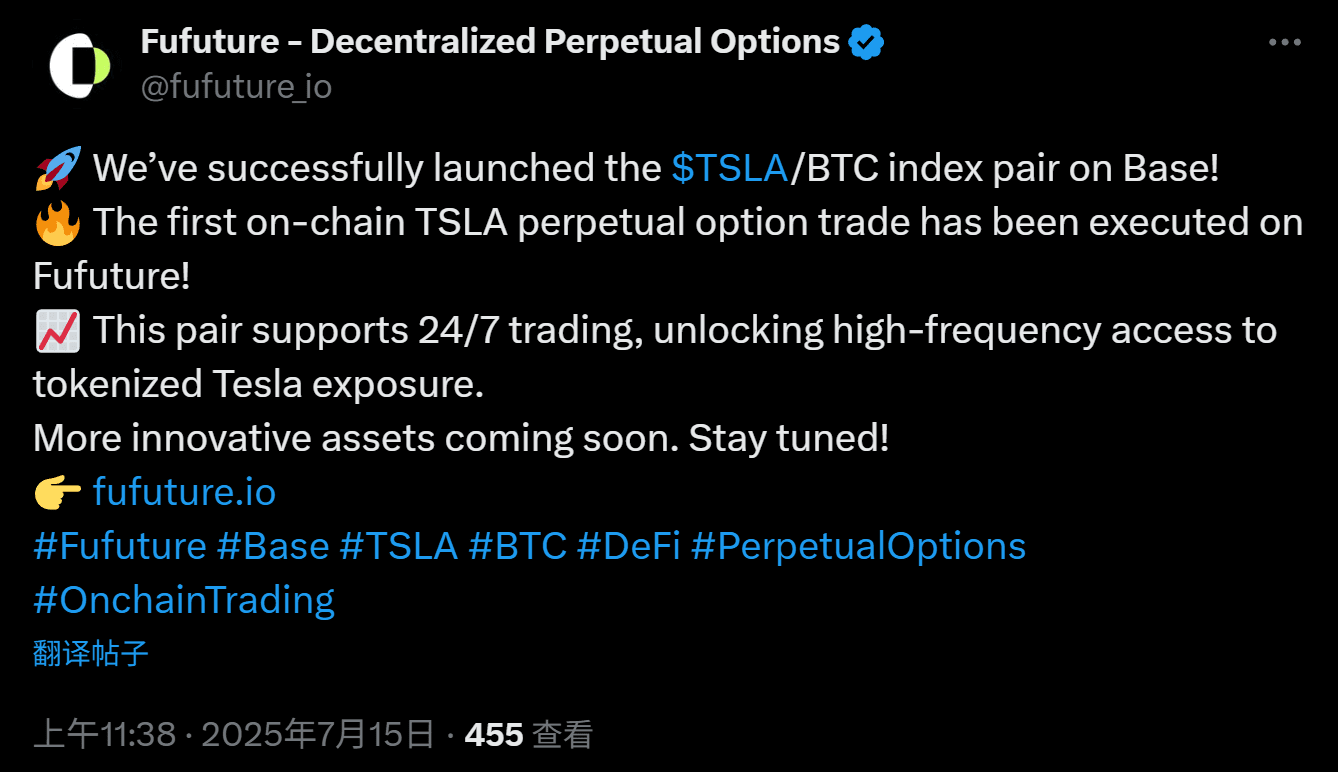
Service providers for tokenized US stocks are indeed exploring this path. This month, MyStonks launched the Tesla stock token TSLA.M/BTC index trading pair in collaboration with Fufuture on the Base chain, with the core mechanism being 'coin-based perpetual options', allowing tokenized US stocks to truly become 'collateralizable trading assets'.
For example, allowing users to use TSLA.M as collateral to participate in perpetual options trading of BTC/ETH. It is reported that Fufuture plans to expand support for over 200 types of tokenized US stocks as collateral assets. Thus, users holding small-cap US stock tokens can use them as collateral to bet on BTC/ETH price movements (e.g., using CRCL.M as collateral for a BTC long position), thereby injecting real trading demand.
Compared to the centralized contract restrictions of centralized exchanges (CEX), on-chain options can more freely combine asset pairs such as 'TSLA × BTC' and 'NVDA × ETH'.
When users can use TSLA.M and NVDA.M as collateral to participate in perpetual options strategies for BTC and ETH, trading demand will naturally attract market makers, high-frequency traders, and arbitrageurs into the market, forming a positive cycle of 'active trading → enhanced depth → more users'.
Interestingly, Fufuture's 'coin-based perpetual options' mechanism is not only a trading structure but also naturally possesses the ability to activate the value of tokenized US stocks, especially in the early stage where a deep market has not yet formed, serving directly as an OTC market-making and liquidity guiding tool.
Among them, project parties can inject tokenized US stocks like TSLA.M, NVDA.M as initial seed assets into liquidity pools, building a 'main pool + insurance pool'. Based on this, holders can also deposit their tokenized US stocks into the liquidity pool, bearing some seller risks and earning premiums paid by trading users, essentially constructing a new 'coin-based value-added path'.
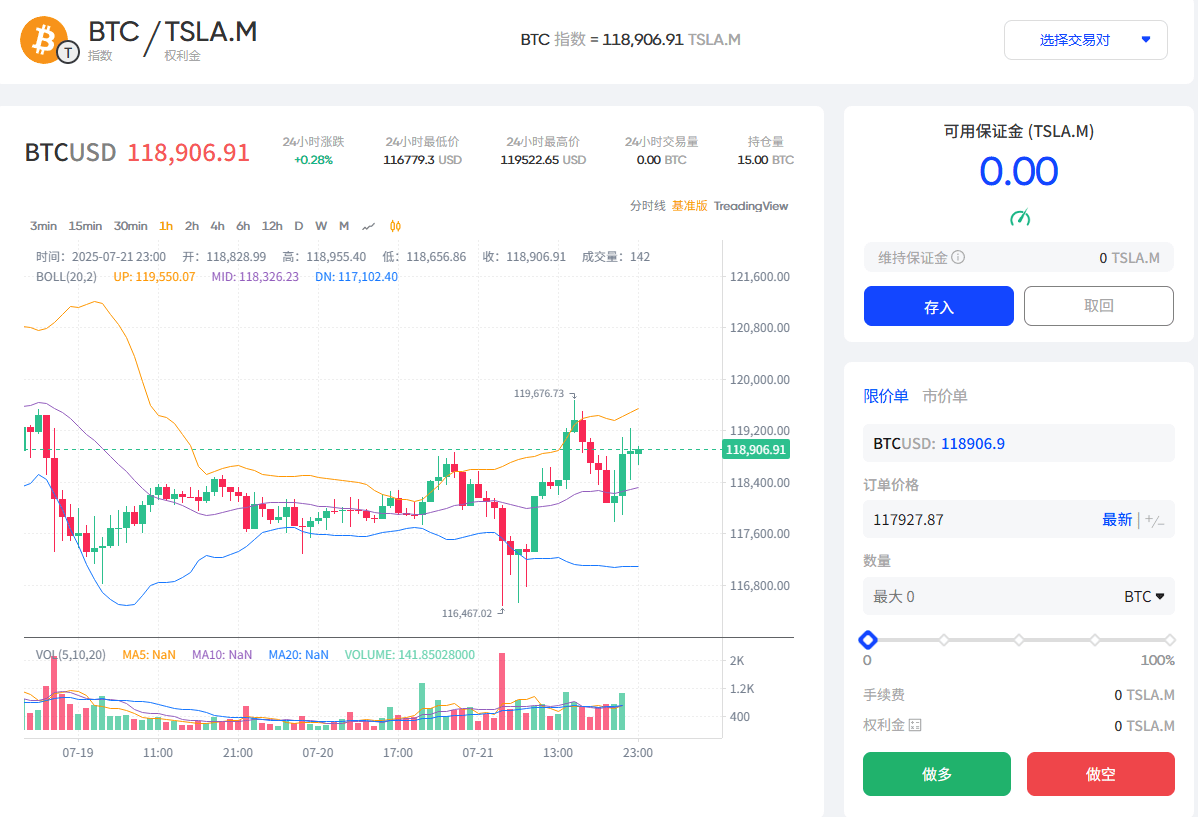
For example, suppose a user is optimistic about Tesla stocks and has bought TSLA.M on-chain. In the traditional path, they have only the following options:
Continue to hold and wait for appreciation;
Or trade on CEX/DEX to exchange;
But now they can have more options:
Act as a seller to earn premiums: deposit TSLA.M into a liquidity pool, waiting for the price to rise while earning premium income;
Act as a buyer to release liquidity: use TSLA.M as collateral to participate in cross-asset options trading of BTC and ETH, betting on crypto market fluctuations;
Combination strategy: use part of the holdings for market making and another part for trading, achieving a dual revenue path and improving asset utilization efficiency;
Under this mechanism, tokenized US stocks are no longer isolated assets but truly integrated into the on-chain trading ecosystem, being reused, thereby connecting the complete path of 'asset issuance → liquidity building → derivative trading loop'.
Of course, different paths are still in the exploration stage, and this article only discusses one possibility.
Written at last
The recent models from MyStonks, Backed Finance (xStocks) to Robinhood Europe signify that the tokenization of US stocks has fundamentally resolved the initial issue of 'whether it can be issued'.
But it also indicates that competition in the new cycle has already arrived at the stage of 'whether it is usable'—how to create real trading demand? How to attract strategy building and capital reuse? How to make US stock assets truly come alive on-chain?
This no longer relies on more broker involvement, but rather on improving the structure of on-chain products—only when users can freely go long or short, construct risk combinations, and combine cross-asset positions, can 'tokenized US stocks' possess complete financial vitality.
Objectively speaking, the essence of liquidity is not the accumulation of funds, but the matching of demand. When on-chain it can freely implement 'using TSLA options to hedge BTC volatility', the liquidity dilemma of tokenized US stocks may finally be resolved.


